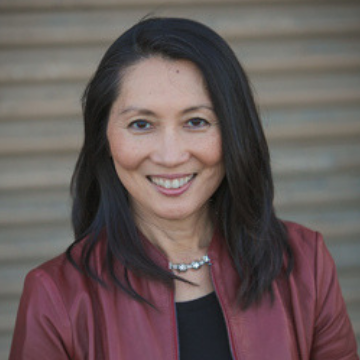Recently, I began a visit to the United Kingdom with a real highlight: an evening of exciting discussion at London’s famed Palace of Westminster, home of the houses of Parliament. I had been invited to join a Fujitsu Women’s Network event and talk about the thorny issue of bias.
Bias feeds into and reinforces historical inequalities that persist in our societies and, by extension, in our workplaces. It poses a major hurdle to organizations’ diversity and inclusion efforts and can have an impact on everything from hiring and promotion decisions to leave policies to how meetings are run every day. It also affects technologies we are becoming more and more reliant on, like AI and machine learning.
So, what could have the most impact as we work to improve inclusion in our organizations?
That was the question I put to our gathering in the Palace of Westminster, a workplace that itself has made strides in recent years to correct its diversity imbalances.
During the session, we took a poll of the audience, which included female business leaders from a variety of industries, as well as a handful of men. They were overwhelmingly in favor of two interconnected approaches.
Nearly 40 percent said executive sponsorship such as an internal executive champion would have the most impact on building inclusive organizations, while 20 percent chose mixed gender mentor/mentee relationships. I’ve experienced both — as a beneficiary and benefactor — and I agree they’re critical.
But one of the most effective ways to build inclusive organizations is to create environments in which people feel comfortable and safe bringing their whole selves to work, without fear of being derailed in their careers or of not being accepted. For example, questions around career development should consider a employee’s professional goals and how those goals can be shaped to fit the trajectory of their life.
After all, our lives are more than just work. There’s marriage, children, aging relatives to care for, passions, and personal interests. As the lines between our work and home lives blur, we must do more to look at our employees and their needs holistically. When we do, they’ll be happier and more engaged.
And happier, more engaged employees have a positive impact on the bottom line. Jacob Morgan, who analyzes more than 250 global organizations in his book The Employee Experience Advantage, has shown that companies that invest most heavily in improving their employees’ work experience had more than four times the average profit than other companies.
For decades, women have worked to redress imbalances in the workplace, but many times at a cost to other important parts of their lives — family, career progression, sleep. They’ve often achieved successes by emulating a narrow and antiquated status quo.
And men have faced challenges, too, as they try to adhere to social norms. They have been expected to focus on work at the expense of spending quality time with their families. And their worth has often been determined by ability to earn.
We know that doesn’t reflect who we are and what we want our organizations to be.
Building truly diverse and inclusive workplaces require us to leave behind biases and break down barriers that prevent people from bringing their whole selves to work. At Citrix, it’s about creating an environment of belonging, where we can live by our core values and contribute as the unique individuals we are.
Learn about diversity and inclusion at Citrix and how we’re creating a better way to work through the power of human difference.



